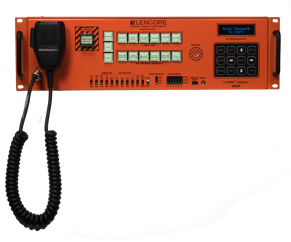Paging systems continue to be very effective notification tools today. Moreover, technology has progressed the paging system beyond the traditional loud speaker where now sophisticated systems can be zoned and addressed to as-needed areas through a plethora of different communication devices. However, there is a clear distinction between a good paging system and a mass notification system.
Mass Notification and Emergency Communication, or MNEC, systems have very specific requirements. In comparing an MNEC system with a paging system the most notable distinction is a mass notification system must meet the STIPA requirement for intelligibility. STIPA, or the Sound Transmission Index for Public Address, is an industry standard that tests for the clarity of a message received. As long as a reading of 0.5 or greater is met on the STIPA scale the designed environment meets the requirement for mass notification.
Alongside the STIPA requirement, the National Fire Protection Agency (NFPA), also calls out in code #72 that a mass notification system must produce a noise level that is 10 decibels greater than the ambient background sound in private spaces and 15 decibels in public spaces. A decibel, or dB, is a measurement of the volume of noise. And, ambient background sound is the indirect noise from all combined sources typically seven feet or greater from the receiving signal; for example, if you are sitting in a restaurant, the combined conversations that are occurring around you, but not directly to you, is considered the ambient background sound. The NFPA is stipulating that the noise source for an audible message in a mass notification system must be 10 – 15 dB above that ambient background sound, because in their estimation, the difference in noise to background sound is distinct and produces an intelligible instruction at that level.
Furthermore, as part of an overall design in a MNEC system, Acoustically Distinguishable Spaces (ADS) must also be identified. An ADS is nothing more than articulating the differences between spaces for use and noise control. Imagine an office floor with four corner offices and an open plan space forming a “t” between those offices. In this scenario you could identify three distinct ADSs: Corners Offices that are closed, but all similar, the interior of the open office plan, and the four ends of the open office plan. The distinguishable difference between the interior and the ends of the open office plan is that the ends have the addition of a wall which treats sound waves differently than the interior of the space which typically treats sounds with partitions.
Therefore, there is an audible distinction between paging systems and mass notification systems. The solution difference lies in the need for merely delivering an audible signal that may or may not be an effective means of communication and a mass notification system that is clearly defined with intelligibility in mind. The need is based on what the facility or owner are attempting to achieve with their building occupants.
Lencore’s n.Form™ is a mass notification system that includes sound masking and also integrates audio, zoned paging, digital signage, social media platforms, email, strobe lights, and text messaging. n.FORM™ meets the UL 2572 standard for mass notification systems delivering the highest quality for reach, clarity, redundancy and reporting. This standard allows n.FORM™ to interface with a Fire Alarm Control Unit and the system leverages LON technology to allow simple integration with other third-party devices.





.png?width=58&height=58&name=X_logo_2023_(white).png)
